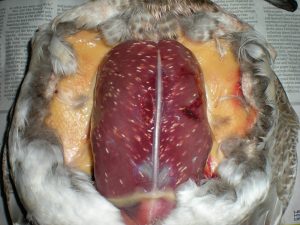Help fight ‘rice breast’ duck disease
The Wildfowl & Wetlands Trust (WWT) and the British Association for Shooting and Conservation (BASC) are calling on members to be vigilant in the fight against ‘rice breast’ disease in ducks.
The Wildfowl & Wetlands Trust (WWT) and the British Association for Shooting and Conservation (BASC) are calling on members to be vigilant in the fight against ‘rice breast’ disease in ducks.

Sarcocystosis, caused by the parasite Sarcocystis spp, appears to be on the rise in the UK. WWT and BASC launched the UK Wildfowl Sarcocystis Survey last year to help monitor the disease in the UK to gain a better understanding of which bird species are affected and the impact it may be having.
So far this year there have already been more recorded cases than in 2015, with wigeon, mallard, teal and gadwall all affected.
Dr Matt Ellis, BASC’s scientific adviser, said:
We don’t know as yet the full impact the disease is having on the population, so surveillance is essential to give us a more complete picture.
There is a concern from our partners in eastern Europe that it is impacting on breeding success, which could affect our numbers here as reproduction takes place over there before the ducks migrate.
Cooking the meat properly kills all stages of the parasite. Even though there is not thought to be a risk to human health from the disease, however, it is not recommended to eat infected birds or feed infected meat to dogs.
Dr Ruth Cromie, Head of Ecosystem Health for the Wildfowl & Wetlands Trust, said:
Monitoring and understanding diseases of our wildlife is the first step to achieving healthy populations of birds, which is what we all want.
Harnessing the ‘eyes on the ground’ of our reserve wardens, who look out for dead birds, and of wildfowlers, who are able to spot the disease easily in shot ducks, gives us an excellent way of getting to grips with this apparently emerging infection.
Anyone who comes across the disease can report their findings via the Sarcocystis Survey website, which includes details of how to send in samples.

